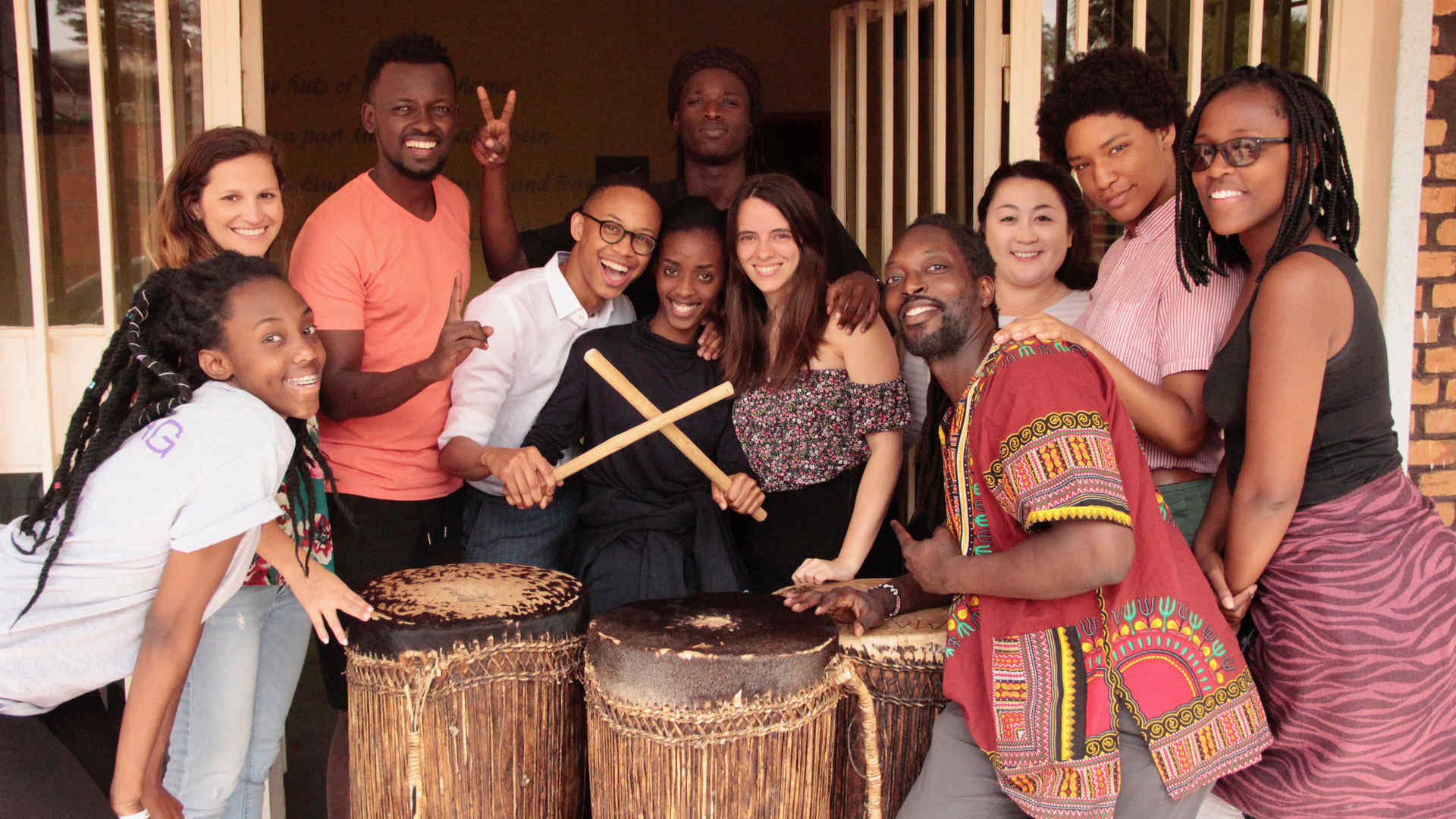
Theater from the guts, or what I learned from a theater collaboration with Rwandan artists.
During the summer, I had the immense privilege of participating in the Ubumuntu Arts Festival in Kigali, Rwanda, in a cross-cultural, cross-continental, cross-discipline collaboration with Rwandan artists from Mashirika Performing Arts and Media Company and U.S.-based artists (most of them Juilliard students and alumni) through the Collaborative Arts Ensemble.

Together with a cellist, a bassoonist, and two very multifaceted actors, our prompt was to devise a piece in a multidisciplinary collaboration with a group of gifted young artists from Rwanda, in order to explore themes of collective memory, the legacy of genocide, and the process of healing. We would be a part of Generation 25, “a collective of young voices questioning the past as they take on the responsibility of being the guardians of a dark history they weren’t a part of.”
We ended up not only digging into the genocide against the Tutsi, which happened in 1994 and broke down the country for almost 100 days, taking the lives of close to a million children and adults. We also discussed a multiplicity of genocides throughout history, and the increasing concern that present-day hatred may lead us down the same abysmal path.


Ubumuntu—the name of the festival—is a word that could be defined as being human. “I am because you are, you are because I am, we are human together,” is the festival’s motto. In the words of Desmond Tutu, “my humanity it bound together in yours, for we can only be human together.”
Here are three of my most important takeaways from the festival:
- Trust in the ensemble and raw vulnerability: On our first day of rehearsal, which was at the home base for Mashirika Performing Arts and Media Company, its inspiring founder and artistic director, Hope Azeda, asked us to share our rose and our thorns. This intimate act of exposing the insides, what’s hidden behind the mask, set the tone for the rest of the journey. From the very beginning, we knew this wasn’t a normal creative process. We knew we had entered a space of trust and rawness, and that creation represented exposure of our most vulnerable parts.
- Make it guttural: I remember Hope’s notes whenever we tackled a scene or a piece of text without full physical, intellectual, emotional, and spiritual commitment. “How do you make it guttural? It feels too comfortable, too safe. And the memories we’re dealing with are not comfortable. What creates the agony? What does choking mean? Come out of it as you come out of water.” She constantly invited us all to take risks. We knew it was necessary. We knew it could have a personal cost, but how couldn’t it? For we were dealing with our roses and our thorns as the whole of humanity.
- Art to portray history cycles and the fight for peace: “The best way to make people change is by portraying the cycles of history,” Hope said. Far from burying the memory of the genocide—that period of such horror and pain—Rwandans have taken the courageous decision of remembering. Every April 7, Rwandans begin a period of remembrance on the anniversary of the day that began the terror in 1994. They revisit the pain every year to prevent history from repeating itself. “Never again.” On July 4, liberation occurred, the day when sorrow gave space to the oxygen of hope. We stepped on the stage this past July in a spot where 250,000 bodies—victims of those three months of terror—had been buried. We honored the dead and we connected with the living in a mutual relationship of trust and beauty and in a common understanding of the power art to heal and build a better world.

I start my second year of acting training at Juilliard with the echoes of the summer as a new piece of my soul. I began the year in a room, on my own, vowing to the craft, knowing that I have decided to dedicate my life to something bigger than myself.
As I give in to the technique and the better understanding of the tools I have to better serve the world of storytelling and the building of characters and relationships, I vow to always remember the guts, how to make it guttural, raw, profound, how to make it mean something, how to really search the soul and never distance my spirit from the stories and the human experience. From within that complex well of humanity I want to create.
And as I move forward and think about my future, I have also promised myself to search for more depth, to investigate, to collaborate, and to discover how, through art, I can contribute to a more just, humane world. To peace. To the violent cycles of history not repeating themselves.

Attend a student performance on campus.